The Val di Fassa, located in the heart of the Dolomites, is a jewel set among majestic peaks, beautiful mountain landscapes and a rich cultural tradition, being part of Ladinia, the land, between Trentino Alto-Adige and Veneto, where the Ladin language community is located and which, in addition to the Val di Fassa, includes the Val Badia, Val Gardena, Valle d’Ampezzo and Valle di Fodóm. The Val di Fassa, which corresponds to the upper reaches of the Avisio stream, which originates from the Marmolada glacier, extends into northeastern Trentino, and attracts visitors from all over the world in both summer and winter. Surrounded by some of the world’s most beautiful mountain peaks (the Dolomites, a UNESCO World Heritage Site, dominate the horizon with their vertical walls and sharp peaks), such as Catinaccio, Sassolungo and Sella, which offer spectacular opportunities for summer hiking and winter skiing, the Fassa Valley is an ideal destination for outdoor enthusiasts who can traverse well-marked trails lead through varied landscapes, from flower-filled meadows to craggy rocks, but it is also a winter sports paradise, as the many ski resorts offer miles of slopes and modern facilities for fun in the snow. What’s more, the Fassa Valley also boasts a rich cultural heritage. The local Ladin-speaking population has maintained its traditions and way of life through the generations.During a stay in the Fassa Valley, you have the opportunity to learn all about a culture that makes this valley so unique. Local museums offer an in-depth immersion into the valley’s history and Ladin culture. A destination that enchants in all seasons: so here are ten places not to be missed during your vacation in Val di Fassa.
A hamlet of the municipality of San Giovanni di Fassa, Vigo di Fassa is an enchanting village that captures the essence of Ladin culture and mountain beauty, so much so that it is part of Italy’s Most Beautiful Villages. Located in the Catinaccio massif, it is known for its traditional wood and stone dwellings, its hospitality (many facilities in the area), and the activities it offers, from exploring hiking trails to relaxing in wellness centers. Its history begins in ancient times, since settlements here are documented as early as prehistoric times, although the present name hints at the passage of the Romans (Vigo from vicus, meaning “village”). The village is also well known because most of the inhabitants habitually speak Ladin (it is the mother tongue for more than 80 percent of the inhabitants of Val di Fassa). The church of San Giovanni, not far from Vigo, is worth a visit: a Gothic building that stands out for its bell tower with its very tall spire, has a frescoed interior and a splendid high altar, and also Gothic is the scenic church of Santa Giuliana, which has a spectacular wooden altar from 1517 by the Bolzano carver Giorgio Artz. Vigo is also home to the Monzoni Mineralogical Museum, which houses more than 200 different types of minerals, a decidedly special institution that is well worth a visit.
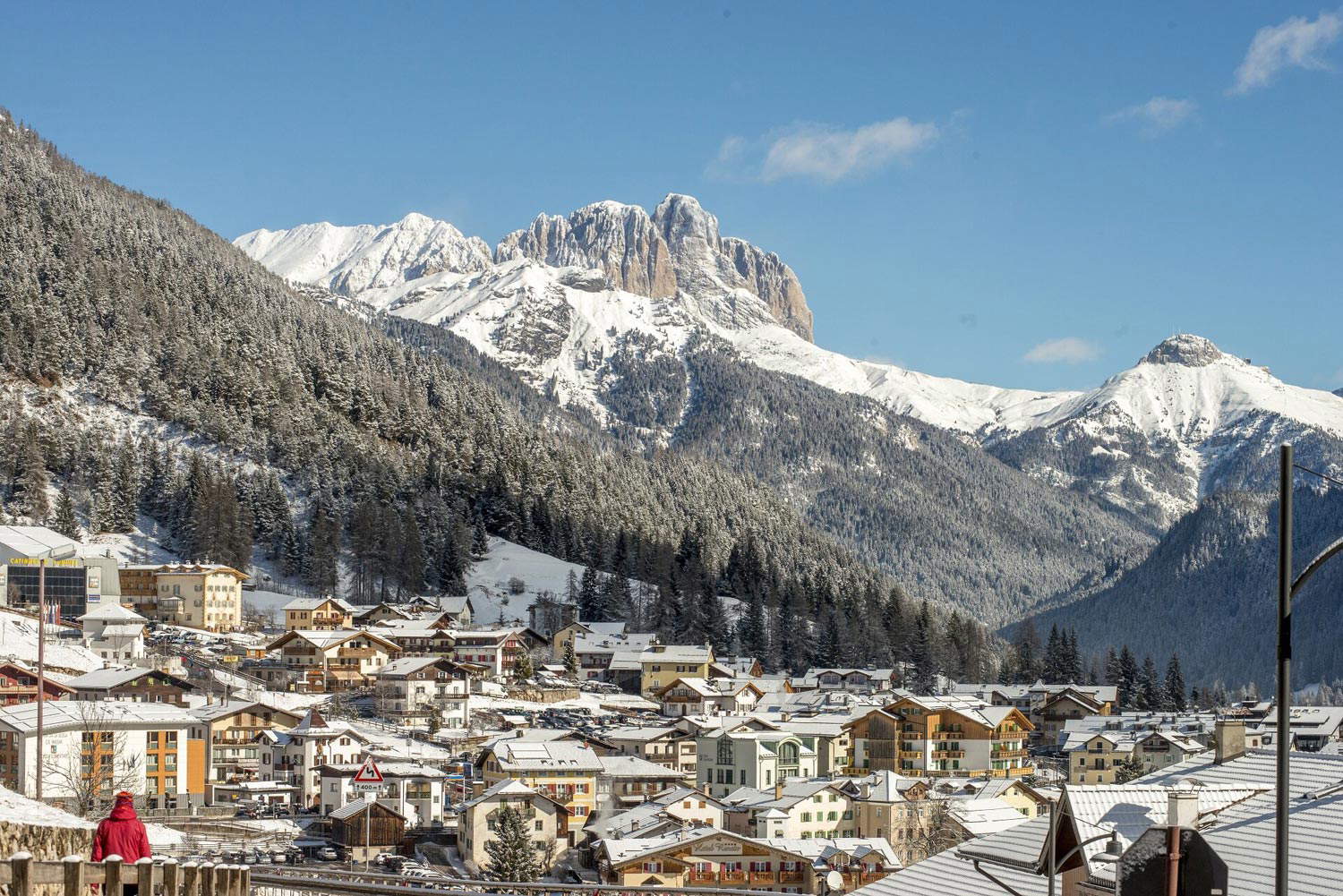
Canazei is one of the most charming and lively villages in the Val di Fassa. Framed by the spectacular Dolomite peaks, Canazei offers a combination of natural beauty and opportunities for outdoor living. Located at the foot of the Sella group, Canazei is an ideal starting point for hiking and biking along trails through varied landscapes. In winter, it becomes a haven for winter sports enthusiasts, thanks to its proximity to the Canazei-Belvedere and Col Rodella ski resorts. In the village you can visit the 16th-century church of San Floriano, while in the hamlet of Gries to see is the church of the Madonna della Neve with its distinctive onion-shaped bell tower. A curiosity: the Dolomites Skyrace, a stage of the world skyrunning championship, the high mountain race, is held every year in Canazei.
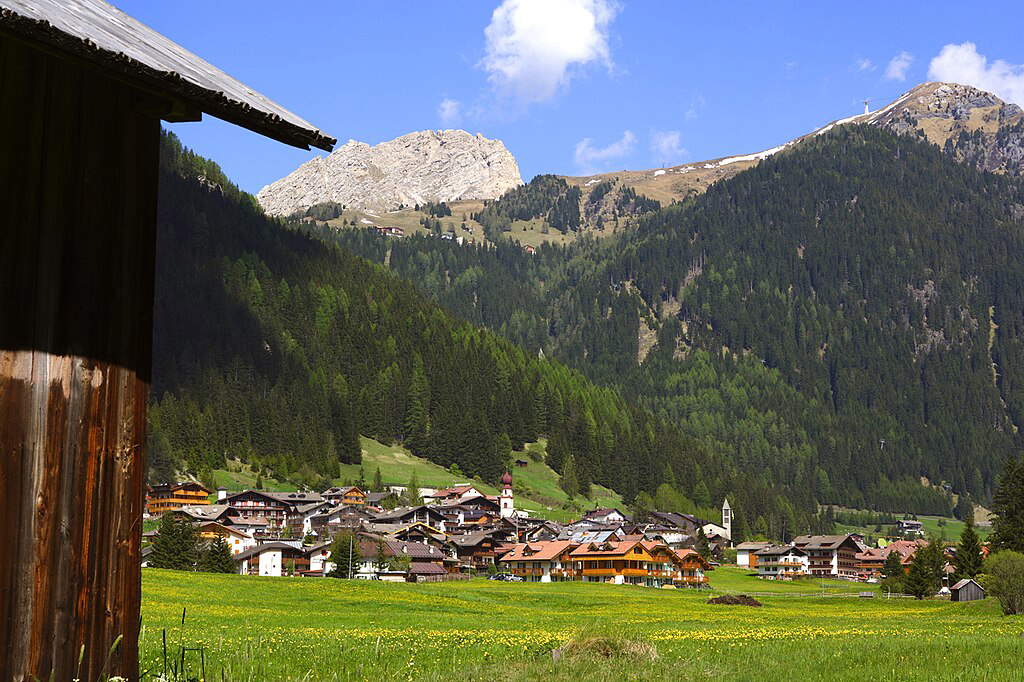
Moena, known as “The Fairy of the Dolomites” for its beautiful atmosphere, is located on the border between Val di Fassa and Val di Fiemme. First mentioned in 1164, it has been part of the Magnifica Comunità di Fiemme since 1318. It is one of the valley’s centers with the longest tradition of tourism: in fact, during the 19th century, Moena began to attract the attention of travelers and tourists in search of natural beauty and breathtaking scenery. Tourism developed further in the 20th century, when Moena became a summer and winter destination thanks to its mountains and the outdoor activities on offer. Attention to the Dolomites’ natural assets then led to the creation of the Paneveggio - Pale di San Martino Nature Park, including Moena within its protected area. In the town, visit the church of San Vigilio, one of the most interesting in the Val di Fassa, with frescoes by local painter Valentino Rovisi, a pupil of Tiepolo active in the 1700s (the San Vigilio altarpiece is also his), and those of the 1930s by Carlo Donati. Also in Moena, don’t miss the thematic exhibition 1914-1918 La Gran Vera - The Great War: opened in 2014, it showcases items from the Federspiel-Caimi collection that recount the events of World War I in the Fassa Dolomites (it is organized in four thematic sections on a 500-square-meter exhibition area covering three floors, with dioramas, photographs, documents, relics, reconstructions and more).
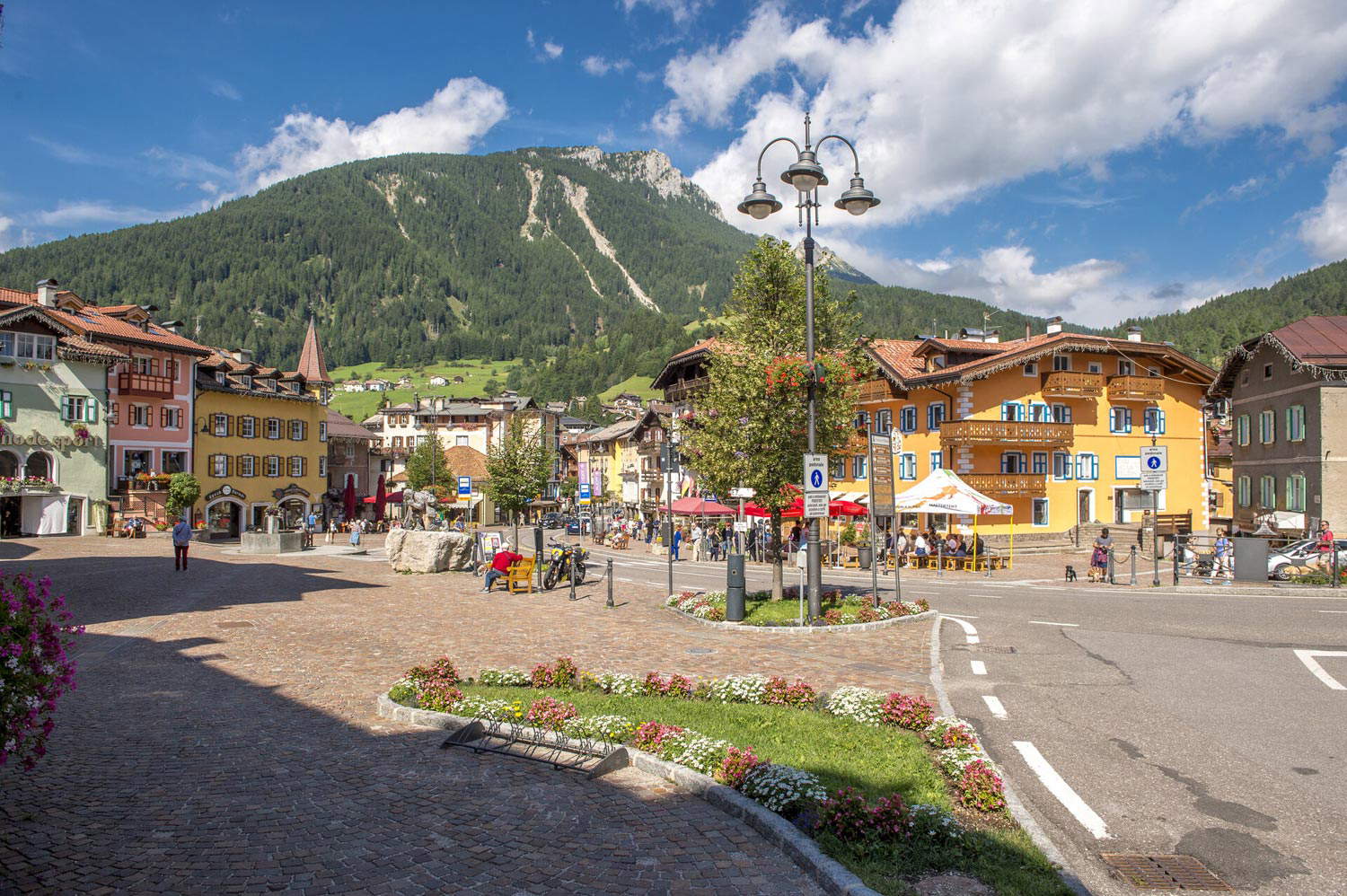
Pozza di Fassa is also a hamlet of the municipality of San Giovanni di Fassa. A place where tranquility and nature come together, Pozza di Fassa is renowned for its spa, where visitors can relax in the thermal waters and enjoy rejuvenating treatments (in fact, there is a sulfur spring, the Aloch spring, unique in all of Trentino, in the church lawn). The surrounding nature invites relaxing walks and hikes amidst enchanting views. However, Pozza is also a very ancient center, whose history originates in the Middle Ages: the 15th-century church of San Nicolò is one of the oldest in the valley. Pozza di Fassa is also a renowned winter sports destination, due to the presence of the Skiarea Buffaure (with one of the longest ski slopes in the valley), the Ski Stadium Aloch (a training center for alpine skiing also used by the Italian national team, where the greatest champions meet), the entrances to the Marcialonga circuit and the Ciancoal ring, renowned cross-country skiing trails.

<em>Soraga, a hidden gem in the Val di Fassa, enchants with its authenticity (it is one of the oldest villages in the Val di Fassa, located between the Alpe di Fuciade and the San Pellegrino Pass) and its community spirit. This traditional village, a center of handicrafts (many stores specializing in woodworking) is the ideal place to immerse yourself in local customs and the charm of mountain life. Surrounded by verdant meadows and enchanting forests, Soraga offers opportunities for relaxing walks and moments of contemplation, but also for sports: in fact, it is a favorite destination for cross-country skiers, who can follow the Marcialonga circuit from here. Also worth seeing is the church of Saints Peter and Paul, of 16th-century origin but extensively remodeled in the 20th century.

Lake Antermoia is a lake of glacial origin located on the Catinaccio massif, at an altitude of about 2,500 meters, set in a spectacular mountain environment. Access to the lake can be made through various hiking routes, which require a certain degree of physical commitment (it should be mentioned that it cannot be reached by car and there are no ski lifts either). Among the various options, the easiest trail starts from Campitello di Fassa and crosses Val Duron among picturesque landscapes, passing through alpine meadows, forests and rocky areas, with a long walk. One of the highlights of this hike is the Antermoia Refuge, an alpine structure located a short distance from the lake. This hut offers refreshment and rest to visitors, and is a great place to enjoy a traditional alpine meal and admire the surrounding scenery. The effort pays off, however, because the hike to Lake Antermoia is an unforgettable experience for hiking enthusiasts, precisely because of the beauty of the landscape, nestled between unique peaks.
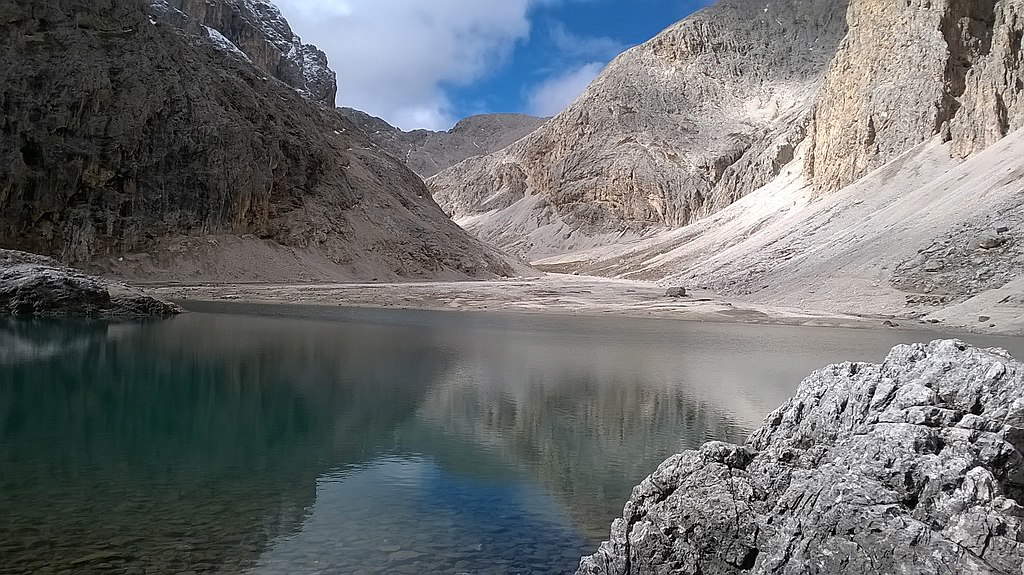
Marmolada is one of the most majestic mountain groups in the Dolomites. Also known as the “Queen of the Dolomites,” this mountain represents an imposing and fascinating presence in the alpine landscape of Italy. It lies on the border between the regions of Trentino-Alto Adige and Veneto, specifically between Val di Fassa and Val Pettorina. Its highest peak, Punta Penia, reaches an altitude of 3,343 meters above sea level, making it the highest mountain in the Dolomites. One of Marmolada’s most recognizable features is its imposing glacier, the Marmolada Glacier (which gave rise to the mountain group’s name, probably derived from the Indo-European root marmar-, meaning “to shine,” “to shine”), which descends from the northern slope. This glacier is one of the few remaining glaciers in Italy and, despite challenges related to global warming, continues to be a spectacular sight. Marmolada offers a wide range of activities and experiences for visitors in all seasons. During the summer, hiking trails allow visitors to explore the surrounding natural beauty and take in the panoramic views of the Dolomites. In winter, Marmolada becomes an ideal place for winter sports enthusiasts. A special aspect of the Marmolada is the Marmolada Great War Museum, located at Punta Serauta, at an altitude of 2,950 meters: it boasts of being the highest museum in Europe. This institution is dedicated to the memory of World War I and the battles that took place in the Dolomites.
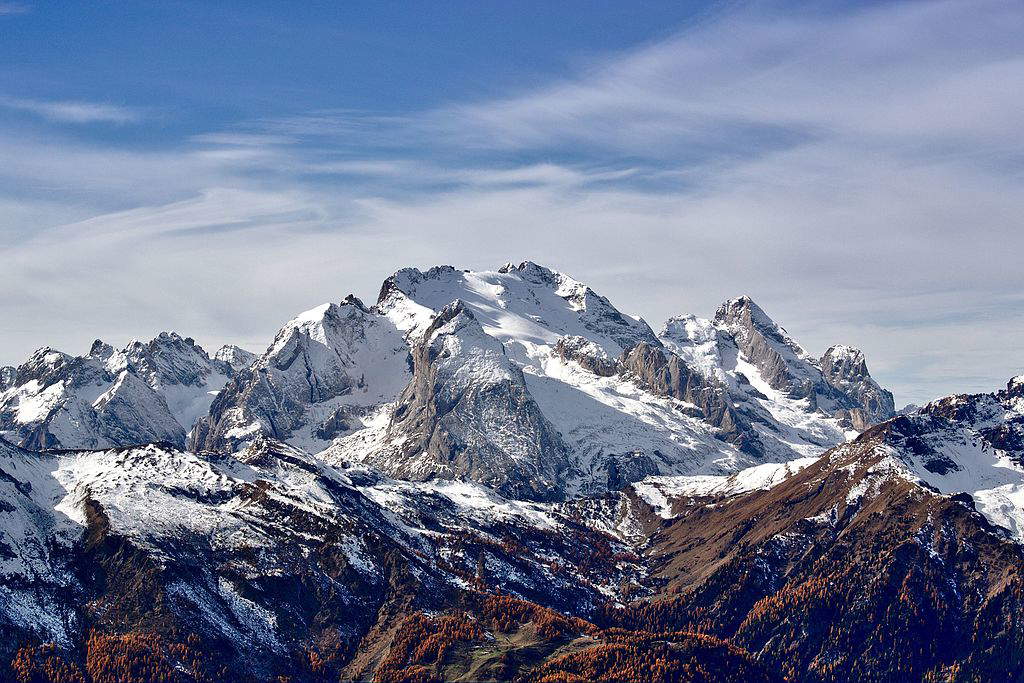
The Fassa Valley is surrounded by spectacular alpine passes, connecting the valley with other regions and offering priceless views. There are five of its passes, best known to cycling enthusiasts because they regularly host passages and arrivals of the Giro d’Italia, being for bicycle racing among the toughest and most beautiful mountains to see in the entire Alpine region. The Pordoi Pass is located at an elevation of 2,239 meters (7,780 feet), connecting the Fassa Valley with the Cordevole Valley in Veneto. The Pordoi Pass is also famous for its spectacular panoramic views of the Marmolada and the Sella Group. It is easily accessible by car or bicycle and offers opportunities to explore hiking trails and enjoy local cuisine at alpine huts. The Sella Pass is another pass of great significance to the Fassa Valley. Located at an elevation of about 2,240 meters, it connects the Fassa Valley with the Gardena Valley. This pass is surrounded by the majestic peaks of the Sella Group and offers a driving or cycling experience surrounded by spectacular views. During the winter, the Sella Pass is part of the famous Sellaronda, a ski circuit that crosses four passes around the Sella Group. Passo Fedaia, on the other hand, connects Val di Fassa to Agordino. With an elevation of about 2,057 meters, it offers a scenic road that leads to the foot of the Marmolada Glacier. Also on the summit is Lake Fedaia, which is divided into two: one is of natural origin, the other, the larger one, originated from the dam built in 1956. The San Pellegrino Pass connects the Fassa Valley with the Feltre Dolomites. Located at an altitude of about 1,918 meters, this pass offers spectacular views of the surrounding peaks and is a popular destination for both winter and summer activity enthusiasts, with numerous opportunities for skiing and hiking (a must-see, at the summit, is the small church of Sant’Antonio). Finally, the Costalunga Pass, which connects the Fassa Valley with the Ega Valley. With an altitude of about 1,753 meters, it is famous for its proximity to Lake Carezza, one of the most picturesque lakes in the Dolomites, located in the municipality of Nova di Levante, in the province of Bolzano.
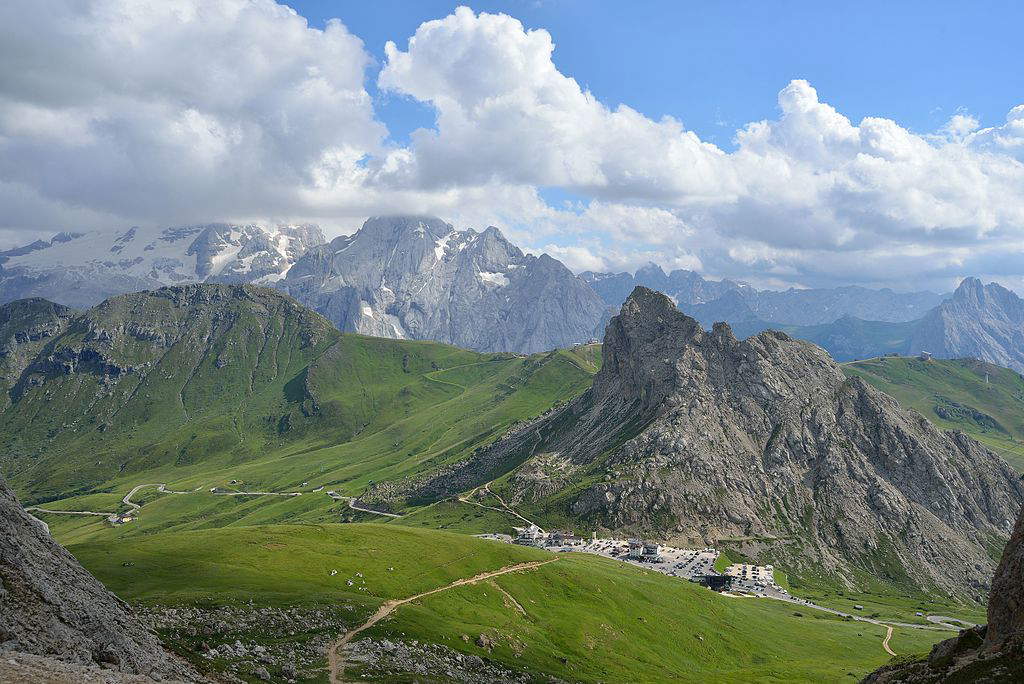
The Ladin Museum of Fassa (the “Museo Ladin de Fascia” in Ladin), located in San Giovanni di Fassa, is a valuable institution located in the heart of the Fassa Valley. This museum is dedicated to preserving and promoting the rich Ladin culture, history, and language of the region. The Ladin language is a Rhaeto-Romanic language spoken by several communities in the Dolomites, including the Fassa Valley. The Ladin Museum of Fassa was founded in 1981 (the current location, however, dates back to 2001: the structure was designed by the great designer and architect Ettore Sottsass) with the goal of preserving and documenting the unique culture and traditions of the Ladin communities of the Fassa Valley. It houses an extensive collection of objects, documents, photographs and artifacts that reflect the history, daily life, crafts, music and customs of the Ladins of the Fassa Valley. The collection is divided into several thematic sections covering various aspects of Ladin life, including traditional agriculture, local crafts, traditional costumes and folklore. There are also 15 interactive stations that play videos and film excerpts. Also worth seeing are Mino Manara’s panels devoted to the legends of the Latin people. There are also five detached sections, dedicated to as many aspects of Ladin history: “La Sia” (the Venetian sawmill), “L Malghier” (cheese-making), “L Segat” (forestry), “L Molin de Pèzol” (the mill), and “L Stònt” (dedicated to weapons).
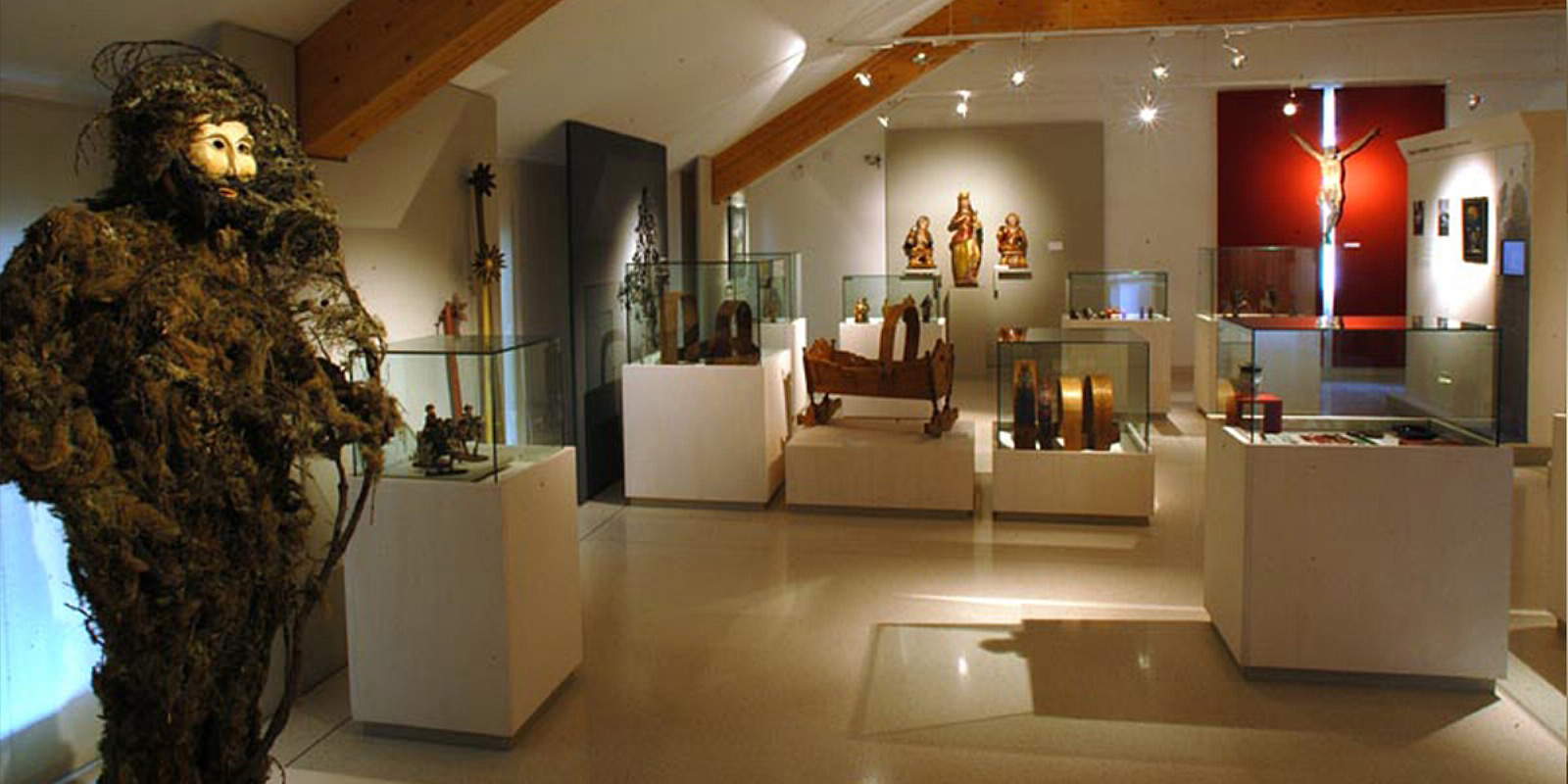
The Paneveggio - Pale di San Martino Nature Park is a protected area located in the Dolomites. Known for its variety of landscapes and natural habitats, the park offers a refuge for wildlife, a great diversity of flora, and a range of outdoor activities for visitors. The nature park was established in 1967 in Paneveggio, an ancient forest also known as the “Forest of the Violins” (the name comes from the fact that the spruce woods found in the forest were used to make musical instruments, including valuable violins), which is located in Val di Fiemme, but the park also includes Moena in Val di Fassa. The park covers an area of more than 19,000 hectares, which includes forests, alpine meadows, mountain peaks, rivers, peat bogs, and glaciers (don’t miss the Vanoi Valley farms). It is home to a wide variety of plant species, including stone pine, spruce, larch, and beech, and is also a refuge for wildlife. Among the animals present are deer, chamois, roe deer, marmots and a wide variety of birds including the capercaillie, Italy’s largest galliform.
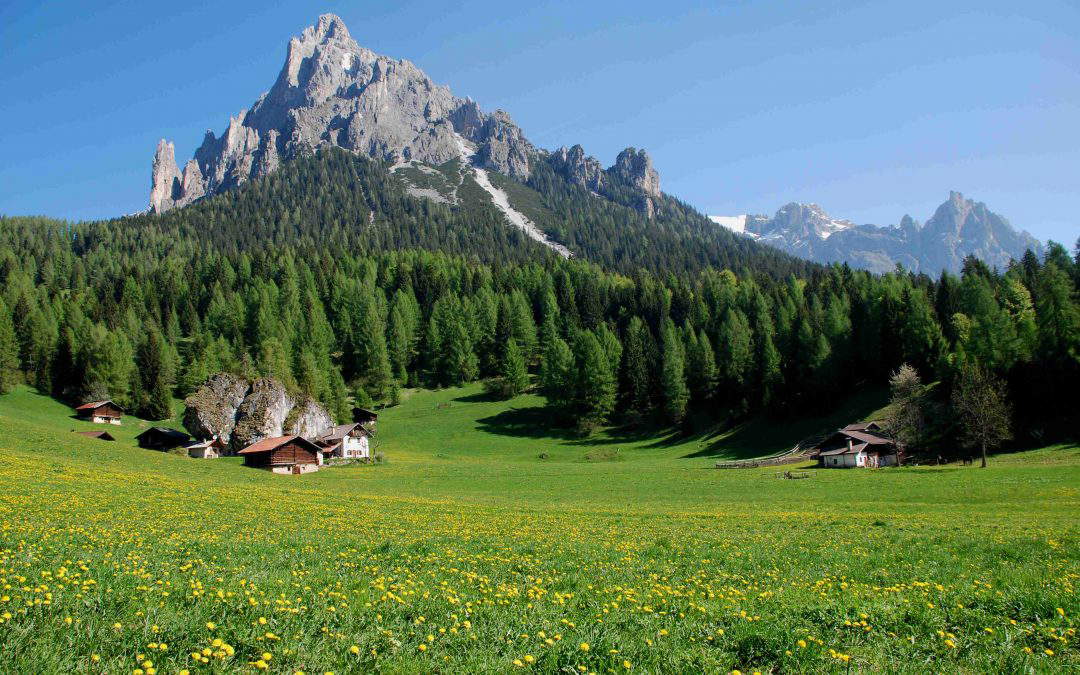
 |
| Val di Fassa, what to see: 10 places not to be missed |
Warning: the translation into English of the original Italian article was created using automatic tools. We undertake to review all articles, but we do not guarantee the total absence of inaccuracies in the translation due to the program. You can find the original by clicking on the ITA button. If you find any mistake,please contact us.